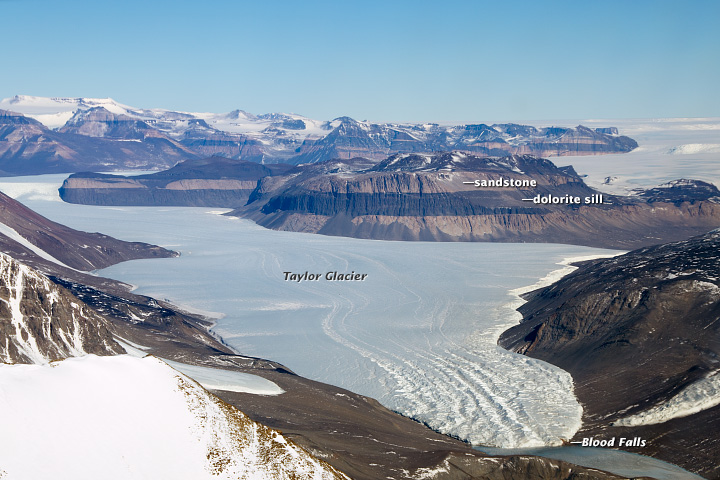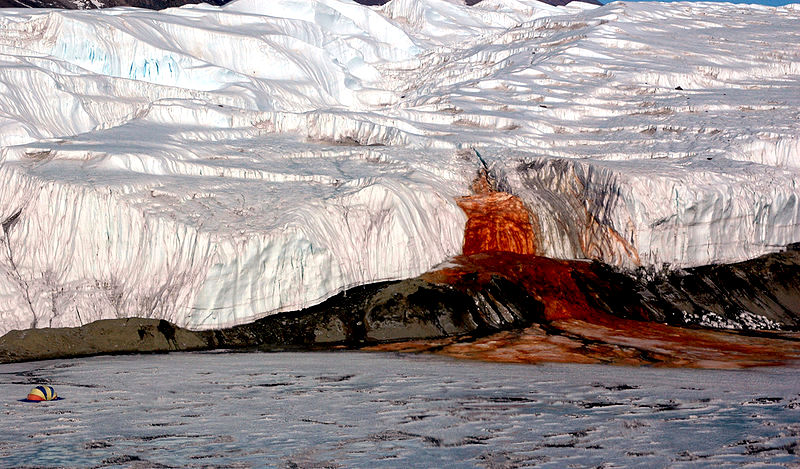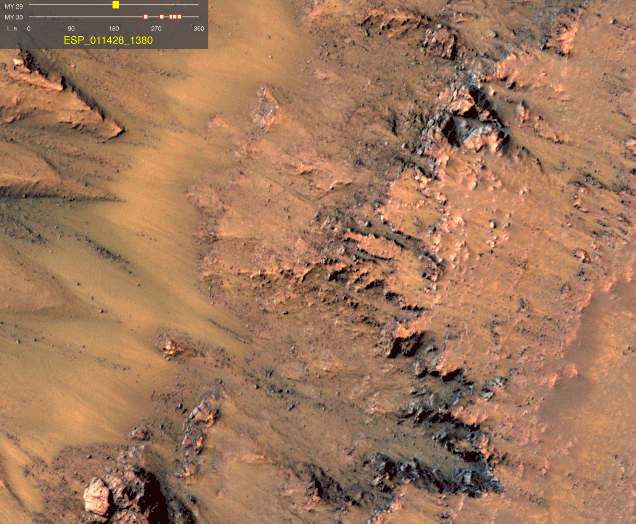Bloody Falls, Dry Valleys, & Mars
Sollas Glacier in Taylor Valley, the Dry Valleys in Antarctica (National Science Foundation)
Antarctica's Dry Valleys are perhaps one of the strangest environments on Earth. High mountains surround the barren region creating a rain shadow preventing moisture from the continent's interior ice sheet from reaching the ocean. This produces a region of cold, dry, barren land with extreme aridity. Several, almost stationary, valley glaciers are 'cemented' to the valley's bedrock. The Dry Valleys have remained ice-free for perhaps 10 million years or longer and are used as laboratories for what Martian landscapes may be like today.
Taylor Glacier is particularly odd as it has a seeping waterfall on its leading front that appears to be bleeding, Blood Falls. The glacier is named for the Australian geologist who discovered it in 1911. Water samples taken at the falls have been analyzed and multiple organisms have been identified. The red colored water derives from bacteria that exist within a lake of ancient seawater buried under the glacier. These microbes have the ability to metabolize iron dissolved in the water. The trapped, sub-glacial lake is enriched by iron-containing salts that when oxidized they turn blood red as the saline water seeps down the 50 foot ice face exposed to the air. The falls emerge from a crack on the glacier's face.


Taylor Glacier and Blood Falls, Dry Valleys Antarctica (credit: US Antarctic Program)
Because the Dry Valleys are ice-free, hyper-arid, and have been so for millions of years, they are considered a surrogate landscape for what Mars may be like. Investigations of extremophiles, organisms that thrive in extreme environments, is one prime reason for the ongoing research in these Antarctic valleys. The goal is to develop biological methods that could be used someday on Mars. A short video illustrates extremophile adaptations and why extreme environments are useful as natural laboratories for testing.
Several Martian craters have been identified that show signs that something is seeping down the rims' of crater walls. Remote sensing analysis indicates this maybe hyper-saline water seeps from underground aquifers. Salt water has a lower freezing point than fresh water and might exist as a liquid at the atmospheric temperatures and pressures, especially at the Martian equator. An example of this seepage has been tracked and photographed by the HiRise camera on NASA's Mars reconnaissance Orbiter (MRO). The mission, managed by the Jet Propulsion Laboratory, has photographed walls and cliffs in Newton Crater and a photo-animation shows color-changes observed on the crater walls over multiple seasons. It remains unclear if this is a water-based process or some other geologic action that is involved.

There are many strange environments worth exploring and potential extreme organisms waiting to be discovered. Whether a bloody falls, a dry valley, or a Martian canyon the exploration mantra remains the same: follow the water!
WHB